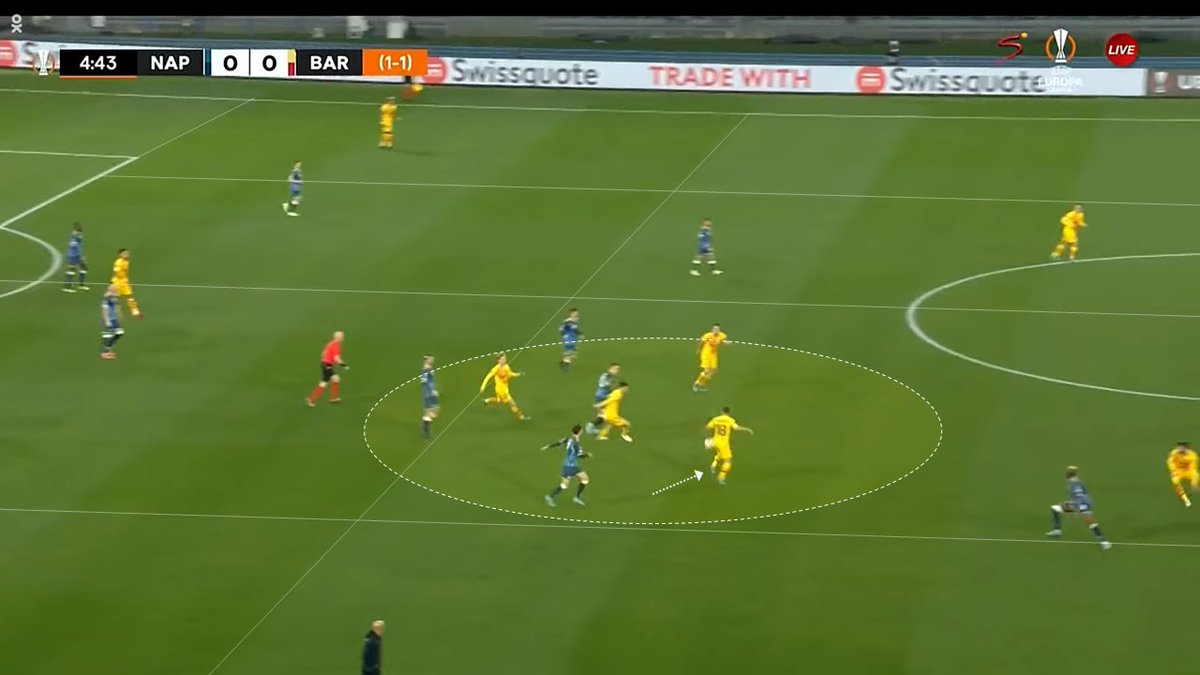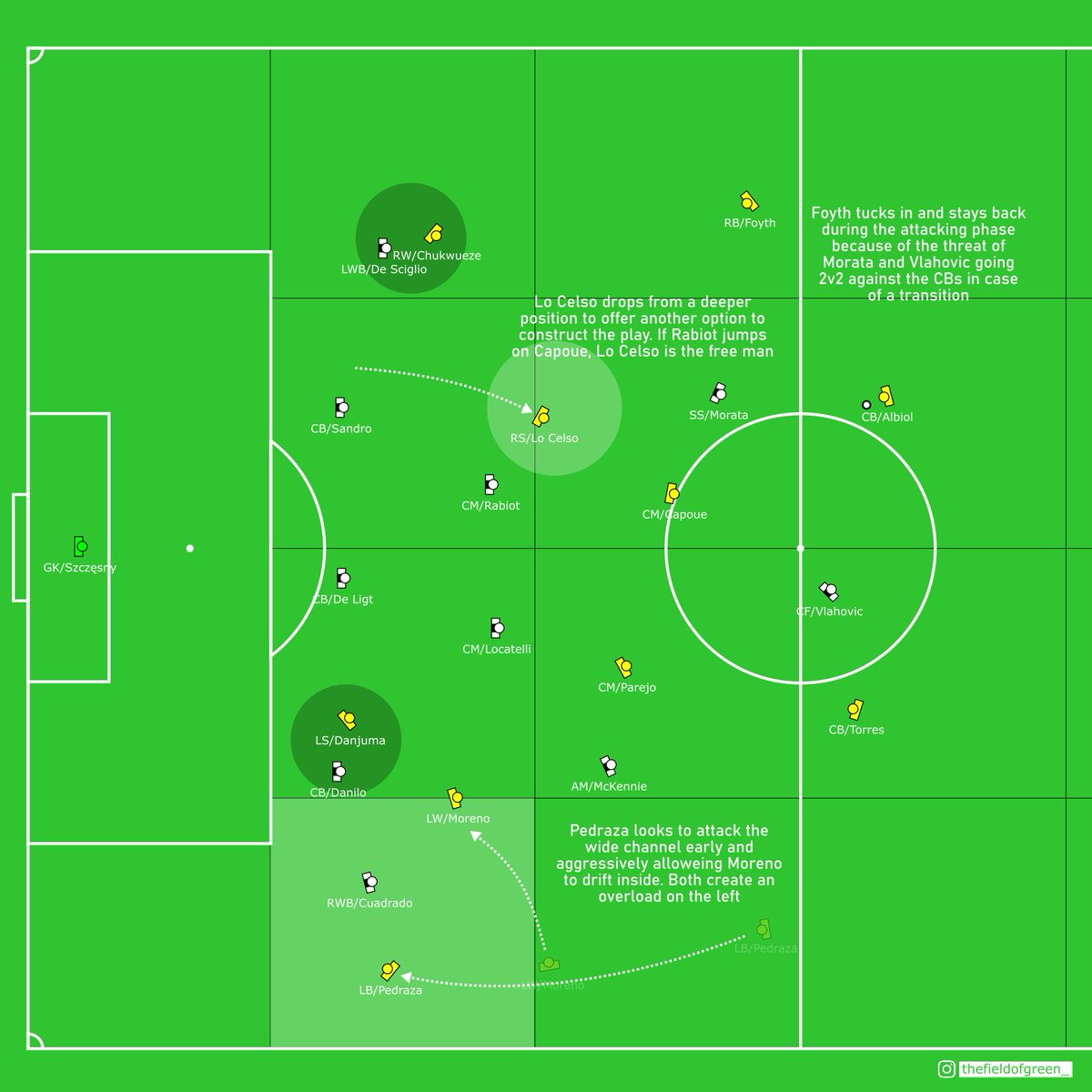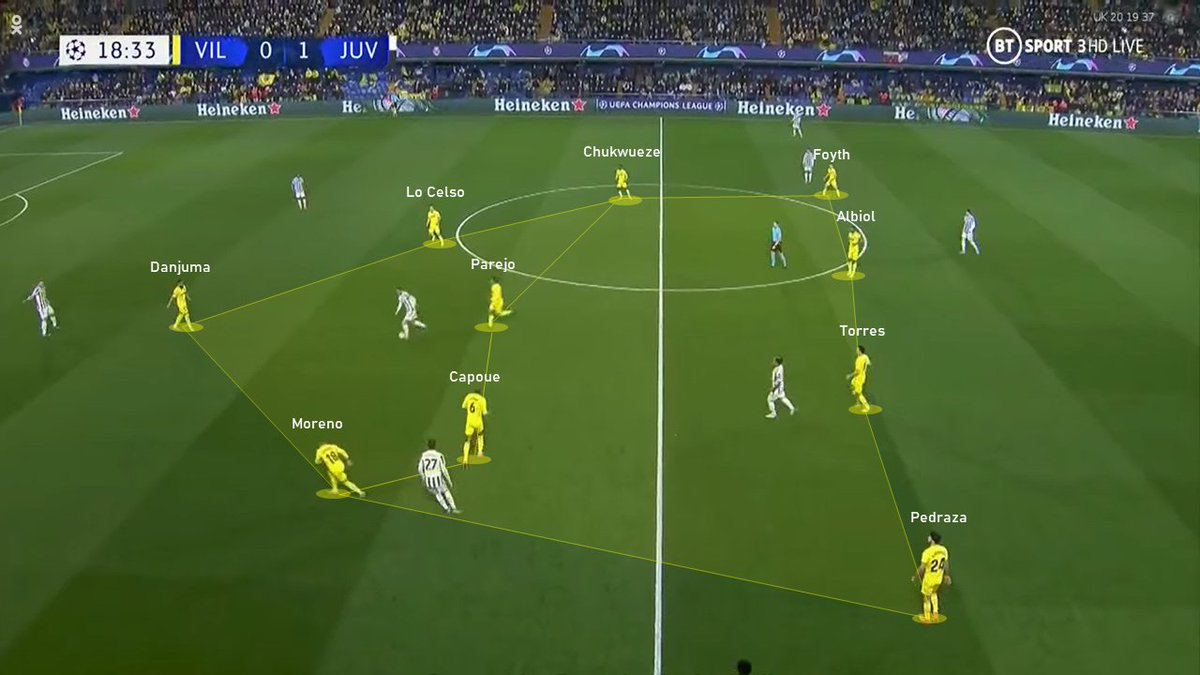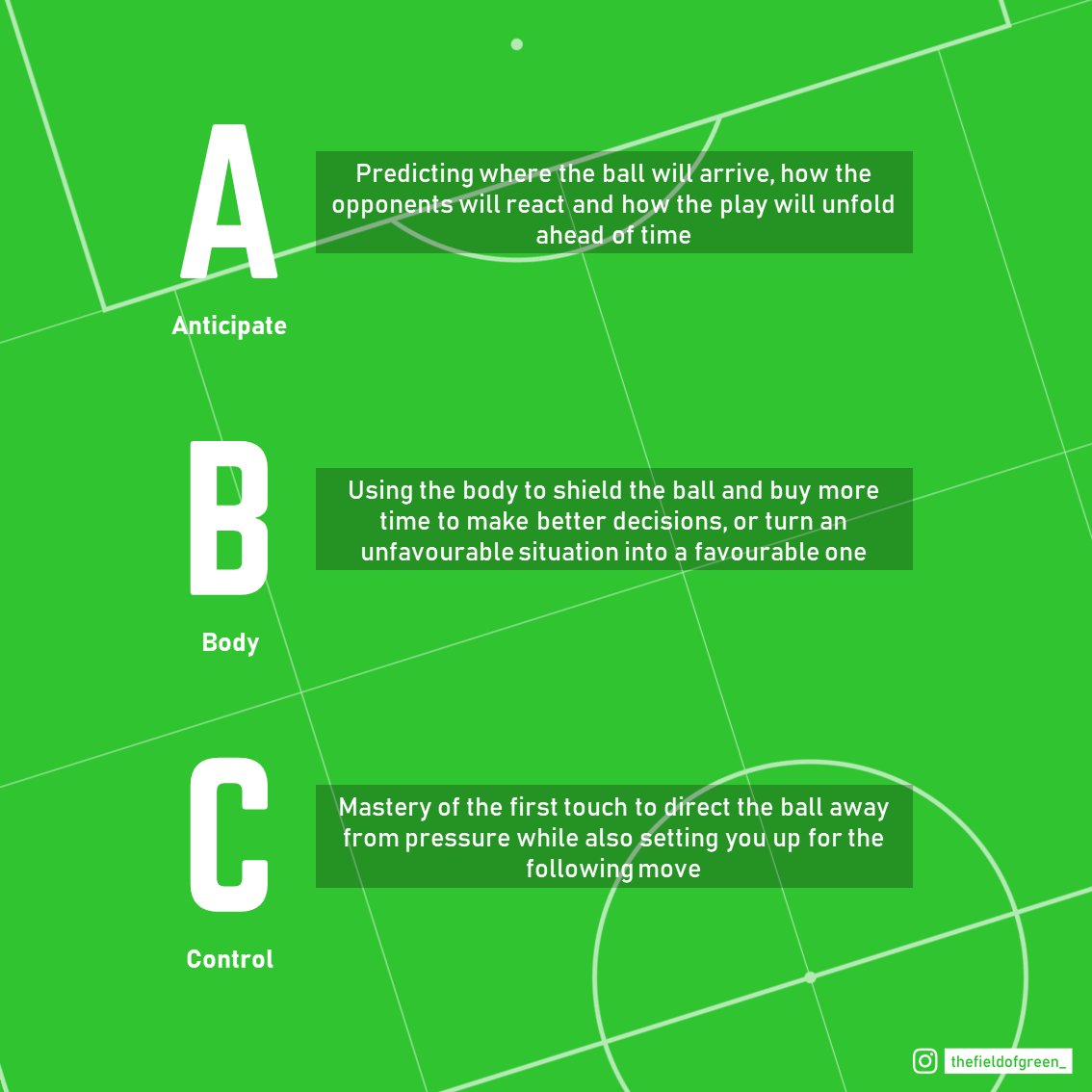
🧵How Barca's switch to 3-4-3 solved the problem of the 4-3-3 against Alaves:
The 1st half was lacklustre and Alaves' disciplined defence controlled spaces both centrally and in wide areas effectively without the ball. How did Xavi's formation switch win the game?
#AlavesBarca

The 1st half was lacklustre and Alaves' disciplined defence controlled spaces both centrally and in wide areas effectively without the ball. How did Xavi's formation switch win the game?
#AlavesBarca


Mendilibar's sides are known for their pressing, and Alaves put up a defensive masterclass in the first half. They set up in a compact 4-4-1-1 shape denying space between the lines with wide midfielders tucking in narrow and the defensive line holding a midblock.
#AlavesBarca
#AlavesBarca

Their pressing structure managed to dominate the central spaces and Barca looked out of ideas even in possession. The front 2 create a 2v2 and Busi is closely marked. Pedri is also outnumbered in the inside channel and the wide wingers are marked 1v1. Dest is the only free man. 

In wide areas, the defence would shuffle across quickly and efficiently to create an overload. In this instance, they create a 4v3 in the zone d5 which forces Barca to play back. Barca also lack any positional superiority in the centre. 

When the pass is played back, Alaves defence pushes up and closes the free players in the middle. The two forwards press with angles to create a 2v2 against the two CBs with no option to break lines with passes through the middle forcing them to go back or around the structure. 

In this instance, Araujo builds up through the inside channel and has Frenkie between the lines, Torres high and wide, and Alba deeper. Despite the options, Alaves pressing structure creates a 4v4 numerical equality on the left side of the pitch giving Barca no real advantage. 

In the subsequent action, Barca are once again forced back from the left outside channel. Alaves have managed to press them out wide creating an overload and in the zone of intervention they make 3v2 with a 4v4 in the outside channel. A great defensive phase example by Alaves. 

70' Xavi brings on Nico for Abde and switches to a 3-4-3. Now they have a double pivot of Busi and Frenkie and two 'interiors' between the lines - Pedri and Nico. Alba and Torres provide amplitude and Luuk (later Jutgla) pins the backline as the centre forward. 

The first effect is less pressure on the CBs to dribble out since they have superiority out of the back. You see the Alaves defensive structure more spread out as a 4-2-3-1 because of two pivots and two advanced mids who have more spaces between the lines in the half spaces. 

The extra central player in the form of Nico helps Barca gain control of the centre. (Read here:
Having 2 players between the lines in the inside channel creates superiority in the middle and frees up the wide player, Torres to whom the final pass leads.


https://twitter.com/roshanrao_/status/1473453279573159946?s=20)
Having 2 players between the lines in the inside channel creates superiority in the middle and frees up the wide player, Torres to whom the final pass leads.
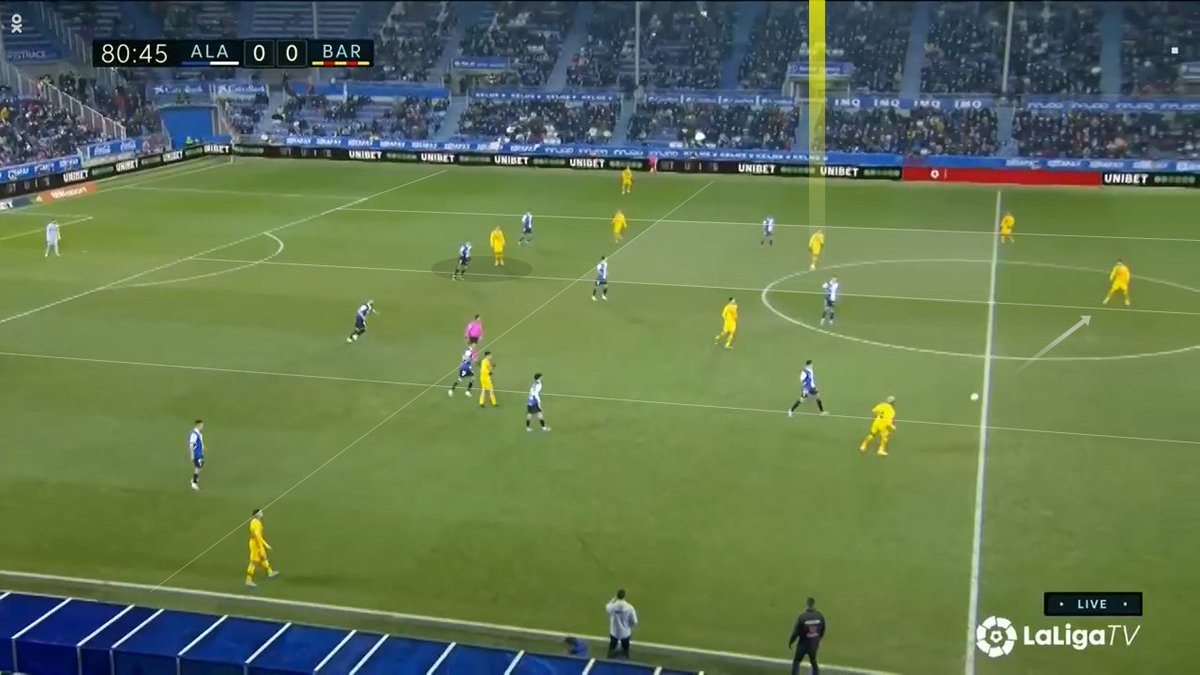
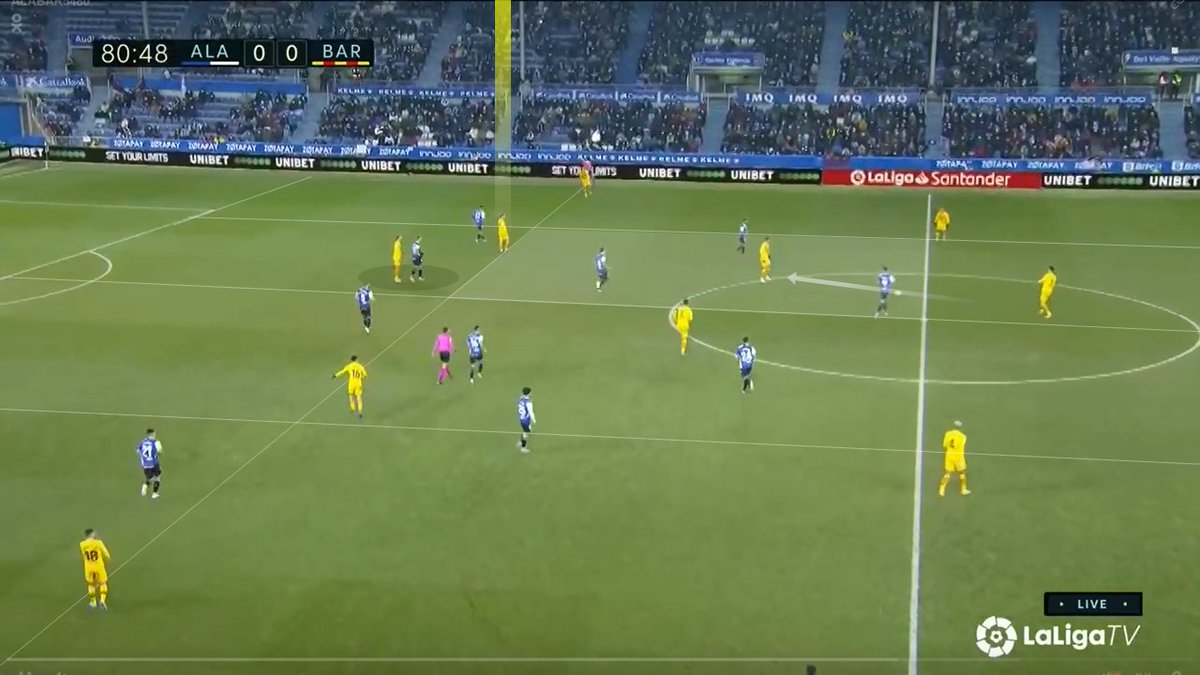

Although the switch to the 3-4-3 comes at a risk of exposing the back to counter attacks, the extra man in the middle helps immediately apply pressure through superiority and increases chances of winning back possession in the middle. 

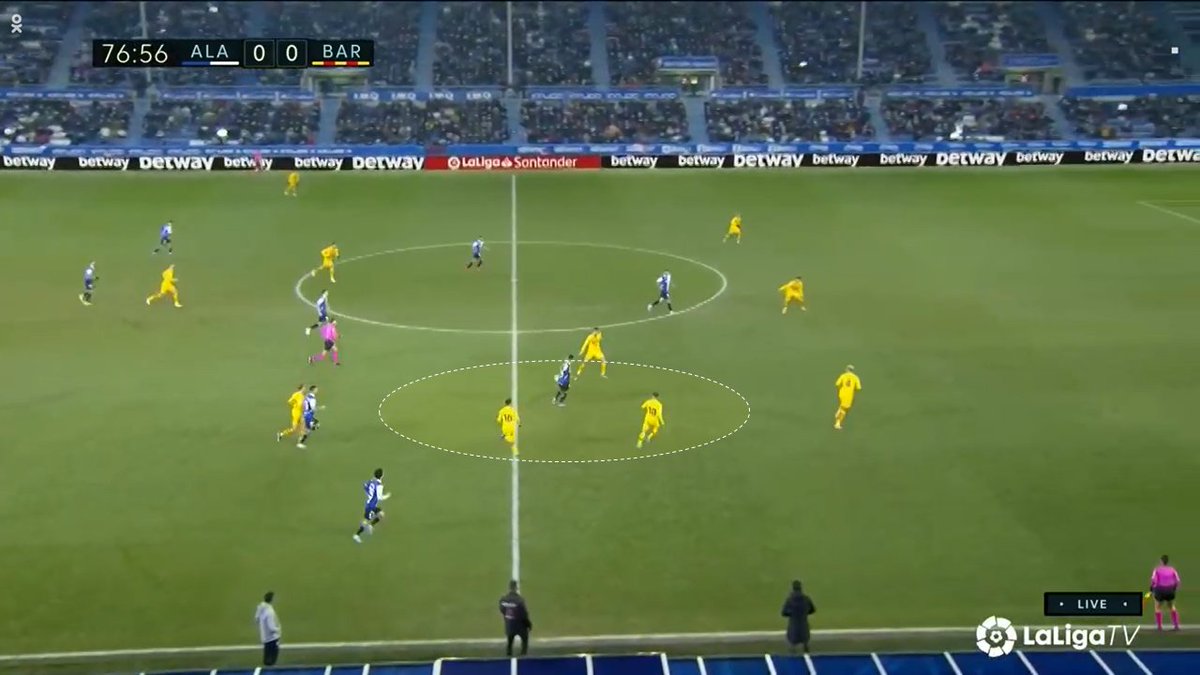

When Araujo finds space to dribble out, both Alba and Pedri attack the backline, one from outside and one from the inside channel. This gives Frenkie space out wide. An additional CM, Nico between lines also gives Torres the freedom to attack the outside channel on the right. 

☝️Compare how positional this attack is to the first half where they were pushed out wide and overloaded on the right, earlier in the thread. The additional player in the middle frees up the wide players and gives more time and space in buildup.
This was the sequence that led to the goal. Despite conceding possession in the progression, they immediately win the ball back through Busquets. You see them having superiority in the middle a4 and b4. Also Torres can hold his position on d5 for Busi to switch the diagonal. 

The change of tactic immediately resulted in Barca playing more positional with better rhythm. Although it could be argued the switch came too late, since they were poor for most of the game and Alaves defended well, it happened just in time to secure 3 crucial points in the end.
• • •
Missing some Tweet in this thread? You can try to
force a refresh







